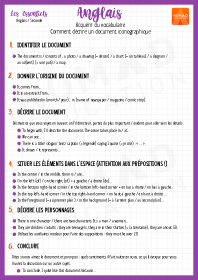Le passé dans le présent
📝 Mini-cours GRATUIT
Vocabulary
🍀 Fiches de révision PREMIUM

Past simple present perfect

Acquérir du vocabulaire – La notion de temps et quelques données chiffrées

Acquérir du vocabulaire – Décrire un document iconographique

Prononciation V-ED, temps de conjugaison avec for, since, ago, during



